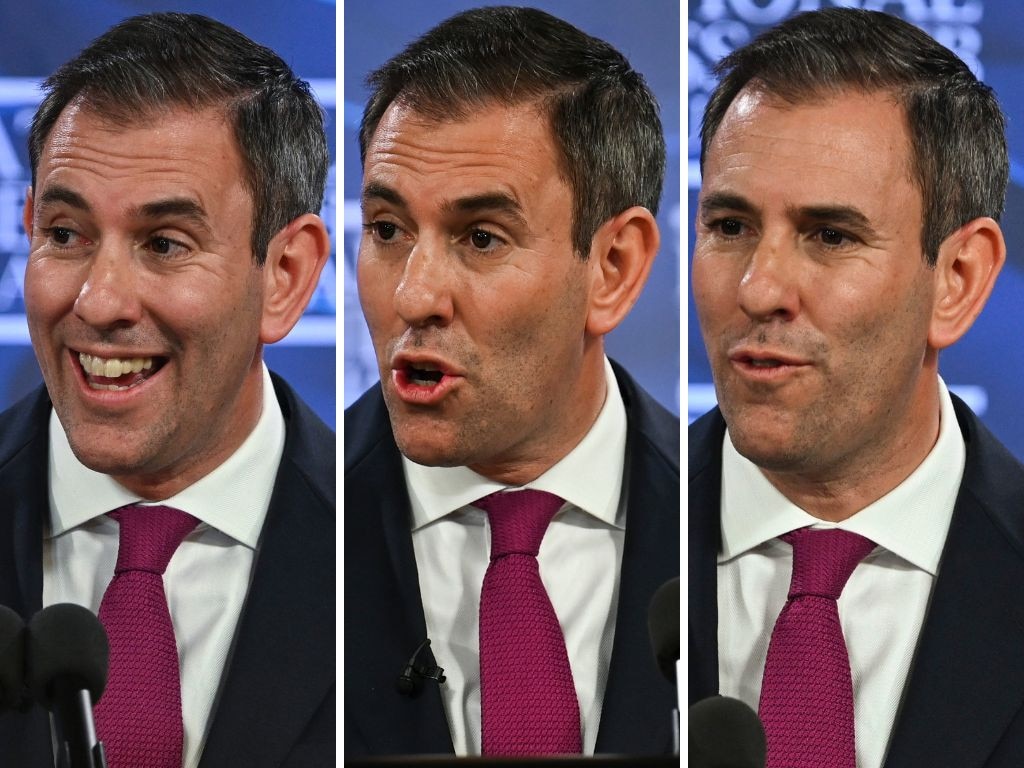Bipartisanship will always trump narrow ideologies on the path to prosperity
Australia needs a strong dose of the reform era’s policy consensus to restore the foundations of our economic success.

To get back on track, we’ll need better returns from migration; a tax system fit for purpose, to encourage growth and productivity, that won’t punish a shrinking pool of young workers. Anyone can see we need more homes.
As Treasury has foreshadowed, and as Labor’s return to power has proven, Canberra is more expensive to run. The pandemic ruptured spending discipline and raised expectations of what governments can do for an ageing society. Yet only parties of government can fix these issues.
There is a role for parliamentary interlopers and disrupters in keeping the major players intellectually and legislatively honest. This may seem pollyannaish in fractious times, but the nation is crying out for a heavy dose of bipartisanship, especially on budget repair, and economic revival.
On Thursday, Treasury secretary Steven Kennedy called for a joint enterprise in fiscal consolidation, reminding the political class that sustainable budgeting, low inflation, market-based solutions and reform to government services have been the foundation of our prosperity for 40 years.
Cast your minds back to what we now call the “reform era”. It’s a wistful recollection, as it implies that we’ve done our dash on the big things. Today’s political class bristles, of course, claiming it’s rosy nostalgia, especially among boomers, about the age of policy giants: Bob Hawke, Paul Keating, John Howard and Peter Costello.
Perhaps Howard’s greatest contributions to economic reform were not realised in his nearly dozen years as prime minister but his actions in opposition. Or, rather, inactions, by not opposing Labor’s landmark moves in the 1980s and ’90s on financial deregulation, tariff cuts, altering the taxation mix, privatisation and industrial relations.
“The reform initiatives of the Hawke and Keating governments in these areas enjoyed the support of the Liberal and National parties and, in some instances, that support was crucial to the Labor initiative being enacted into law,” Howard writes in his autobiography Lazarus Rising (2010).
“In stark contrast, all of the Coalition’s reforms in those same areas were reached despite Labor’s sustained opposition, with the ALP never caring to remain consistent with positions it had taken in government.”
As former productivity tsar Michael Brennan observed recently, “We are seeing the loss, or fragmentation, of the broad policy consensus that sustained us over the last four decades in Australia.” We need to rebuild that intellectual foundation to anchor policies that will raise our incomes and see us through difficult times.
For the policy purists and business lobby, there was little in Jim Chalmers’ third budget to inspire confidence that we’re about to see a rekindling of the reform spirit, aside from the renewed focus on competition policy, or any big-bang tax changes.
Ignore the tribal politics of the pie in the face to the Treasurer from Industry and Science Minister Ed Husic this week. Pecking order? Payback? Whatever. A lower company tax rate is an idea that should be embraced by both major parties as part of a broader reform of the tax system.
Instead, Chalmers is chasing bite-sized reforms. Echoing the views of many economists, former Reserve Bank governor Philip Lowe has said we tax income generation and wealth generation too heavily, and consumption too lightly.

“The answers aren’t at the technical level, they’re at the political level,” he said in April.
Former Treasury secretary Ken Henry argues incrementalism won’t cut it. Henry, who conducted a wide-ranging tax review for the Rudd government 15 years ago, says we have to aim much higher and act with speed to avoid the “intergenerational tragedy of our making”. Henry says we have to shore up the tax base and reduce the burden on younger workers, the same folks who are locked out of home ownership. “We have to avoid the budget’s lazy reliance upon fiscal drag in the personal income tax system,” Henry said at the April launch of Paul Tilley’s Mixed Fortunes, a history of tax reform in Australia.
“We have to reduce the rates of tax applying to the normal return on capital and apply more equal taxation across the various sources of capital income.”
If anything, bigger government is becoming entrenched and intervention is back, no matter how hard the Treasury tries to assert its relevance in the new order through investment guardrails for clean-energy projects, critical minerals development and advanced manufacturing.
In a new critique of the May budget, Robert Carling and Gene Tunny from the Centre for Independent Studies point to a $33bn jump in federal spending in 2024-25 from what was projected in Labor’s first budget in October 2022. They don’t put much store in the road to debt stabilisation, either, based on Treasury projections of a slowdown in spending growth. “It likely will not happen – there will be more spending, bigger deficits and more debt,” Carling and Tunny argue.
Treasury’s Kennedy outlined the source of significant structural spending pressures. Across the next 10 years, payments as a share of GDP are on average expected to be about 2.1 percentage points higher than the 10-year average projected pre-Covid. In today’s money, the capital’s waistline has expanded by about $55bn a year.
Most of this is from three payments: the National Disability Insurance Scheme, public debt interest and aged-care costs. Defence and healthcare are also key drivers of spending growth.
Across a decade, the NDIS is projected to grow by an average of 9.2 per cent a year, less than half of the growth in recent years, due to the sustainability framework negotiated with the states (which begins in 2026) and Labor’s response to the scheme’s review.
“The government is taking on difficult but much needed reform in the NDIS and aged care,” Kennedy told an Australian Business Economists event in Sydney. “Currently, there is a genuine opportunity for a bipartisan approach to reforming the NDIS and putting it on a sustainable footing while better delivering on its important aims.”
He says there is a similar opportunity in reforming aged care, where Aged Care Minister Anika Wells pursues “high-quality reforms in response to the Aged Care Taskforce”.
The Albanese government will try to stop participants overspending their allocated budgets through better design of plans and servicing of individuals’ needs. This tightening up will be resisted by the industry that has been built around the NDIS and parents, especially of infants school boys with spectrum disorders and development issues (the cohort driving much of the scheme’s unforeseen cost blowout). The budget papers, somewhat heroically, estimate there will be savings from the NDIS of $14.4bn across four years.
Such efforts at cost containment are not far removed from those attempted by the former Coalition government and vehemently opposed by Bill Shorten, the Albanese government minister with carriage of the scheme today (and its putative policy initiator). Perhaps only Labor can ever secure the political cover to reform the NDIS.
Aged care also presents immense political challenges. In the coming years, baby boomers will increasingly draw on aged-care services in the home, while also putting strain on the residential sector. The taskforce found additional funding is needed to meet future demand and deliver quality improvements, stemming from the royal commission, “but structural issues mean the sector’s financial viability is poor”.
Preliminary analysis undertaken for the Department of Health and Aged Care estimates an investment of $37bn (in today’s dollars) would be required to build the additional aged-care rooms needed by older people in 2050. “Current funding arrangements will not deliver the required amount of capital funding,” the taskforce’s final report says.
While ruling out a specific tax or levy to fund aged care, the taskforce says “it is appropriate older people make a fair co-contribution to the cost of their aged care based on their means”. Kennedy argues better pricing signals would lead to superior allocation of services, if not lower costs.
The government has delayed the start date for a new Aged Care Act (originally July 1) and is consulting with the industry and community groups.
We’re still waiting to see the details of the legislation but bringing the opposition into the tent is vital, especially as Labor traditionally is vulnerable electorally in this vexed space.
One of the spending horror stories for taxpayers that emerged on budget night was the cost of the ill-conceived deal struck by then treasurer Scott Morrison in 2018 to guarantee Western Australia a share of the GST (and then top up other states), and extended by Anthony Albanese. It has blown out from an initial $8.9bn across eight years to $52.9bn across 11 years. Independent economist Saul Eslake has labelled it “the worst policy decision of the 21st century”.
At $94.5bn next financial year, distribution of the GST to the states and territories is the single largest spending program in the federal budget. Eslake has written extensively on how the deal has corrupted the purpose of equalising the fiscal capacity of the provinces. Both sides of politics are locked into this monster; there are 15 WA seats in federal parliament and state Treasurer Rita Saffioti has said any party that tried to scrap it would lose all their seats in WA.
But Eslake sees an opportunity for bipartisan redemption and salvation for taxpayers. “If the opposition were to say to the government, if you scrap the agreement we will offer you bipartisan support, Rita Saffioti’s threat would lose all its potency,” Eslake tells Inquirer. “But would the Coalition be game to suggest it?”
Eslake believes they probably wouldn’t be brave enough, but those responsible for this awful deal should feel ashamed of themselves for instituting or maintaining it. “After all, the opposition professes to care more about debt and deficits than the government,” he says.
Amid the worrying budget trends, and entirely reasonable calls for an increase in the JobSeeker payment and better support for victims of domestic violence, it’s criminal that this fiscal outrage lives. Yes, budgets are about choices, priorities and electoral maps. Did somebody, somewhere, say national interest?







The federal budget is mired in deficit over the coming decade and will need tough love sooner, rather than later, to get it in shape. Why the hurry? The future is coming at us fast, one where Australia will be older, slower, poorer and habitually in the red as we try to manage an unprecedented economy-wide and bipartisan energy transition to net zero.